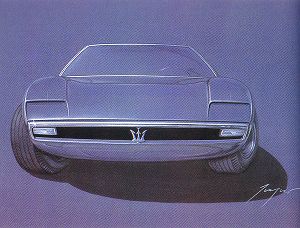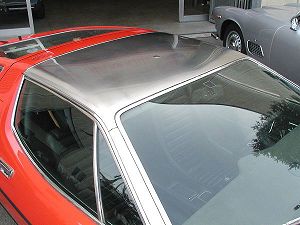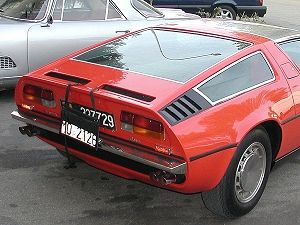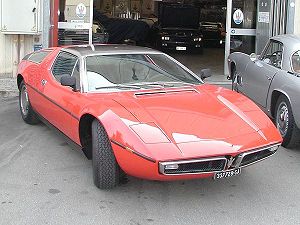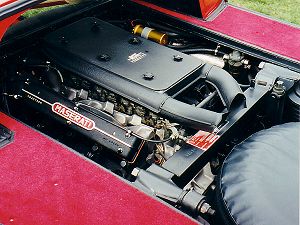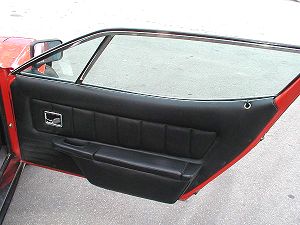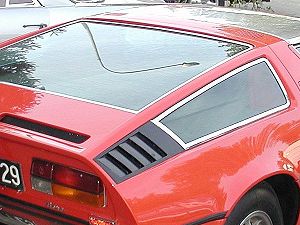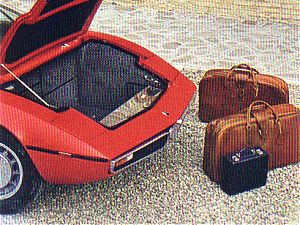| The Bora
"... a wind from the Northern Adriatic Sea." |
 |
||
|
|
|||
It was soon after Citroën took a controlling interest in Maserati in 1968 that the then administrator of Maserati, Guy Malleret, suggested to Ing. Giulio Alfieri the production of a two-seater mid-engined sports car. With the latest trend moving towards two-seater rear-engined sports cars such as the Ferrari 'Boxer' and the Lamgorghini 'Countach', Alfieri had already given this concept considerable thought and when the 'go ahead' came from Malleret, it was music to his ears. |
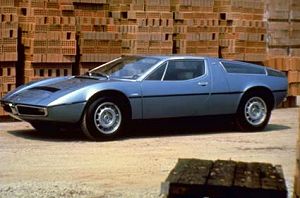 |
||
|
Ever since his previous none too successful ventures into the field of 'rear-engined' sports racing cars with the Tipos 63, 64 and 65, Alfieri had wanted to design a rear-engined road car. He now had the ideal opportunity, for this time he would not be handicapped by the financial restraints of old that had hampered and restricted the necessary development of his previous projects. |
|||
|
While Alfieri worked on the technical solutions, Maserati entrusted Ital Design of Moncalieri, near Turin, with the task of designing the body of this new two-seater, 'mid-engined' Granturismo. |
|||
An amusing insight into the Bora's development appears in Jan P Norbye's excellent book, 'Maserati Bora and Merak', where he describes a conflict of opinion on the mid-engined design between, Alfieri and Maserati's long time test driver Guerrino Bertocchi, a great admirer of front-engined cars - the Ghibli in particular. |
|||
The design and development of the Bora started in October and the first prototype was on the road in the summer of 1969. Photos of the early prototype show the same overall design of the production car but there were some minor differences. Between the bonnet and the windscreen were two horizontal air intakes/scoops and behind the front wheel arch, above and below the 'belt-line', were two louvred air vents. At the rear of the roof there was no lip-type spoiler and the number plate lights were mounted either side of the number plate. |
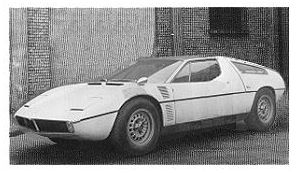 |
||
Once again Alfieri turned to Maserati's powerful and reliable V8 engine for its power base, this time the 4.7-litre unit. |
|||
|
|||
To ensure the best possible driving position, the steering wheel was adjustable for rake and reach. The high pressure hydraulic system allowed the driver's seat to be adjusted for height but had no forward or aft movement, instead, the same system allowed the entire pedal box to be be moved forwards and backwards by some three inches. |
|||
The Maserati tradition of quality build and passenger comfort came at a price for although the Bora was shorter and lower than the Ghibli (its wheelbase was in fact some 50mm longer), it weighed some 180 kg more. |
|||
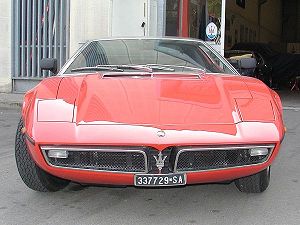 Early Bora: Note the square front corners of the headlights |
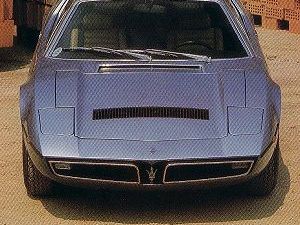 A black louvred grille on later European cars |
During its production years the Bora underwent only minor changes, early versions had the front boot lid hinged at the rear, 'alligator' fashion, but later European models were hinged at the front end. On early models the retractable headlight covers were rectangular (see photo above left) but on The later models but were rounded off at the front corners (see photo above right). During the last years of production the front boot lid was given a black louvred grille. |
|||
An article in the March 1996 issue of Ruoteclassiche states that in 1978 the last Bora was the 524th example made and of these, 289 were 4.7-litre and 235 were 4.9-litre models. |
|||
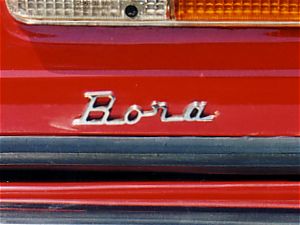 |
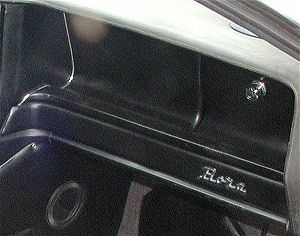 |
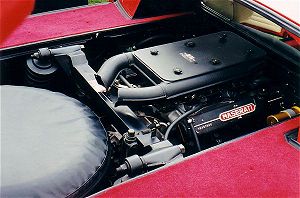 |
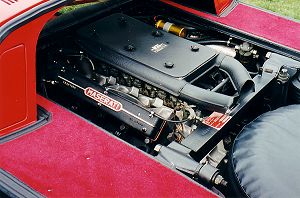 |
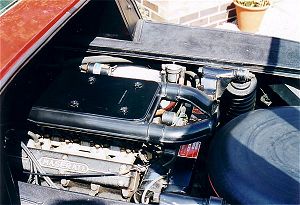 |
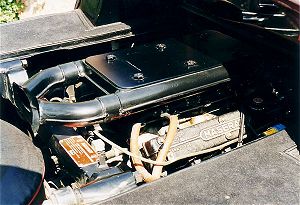 |
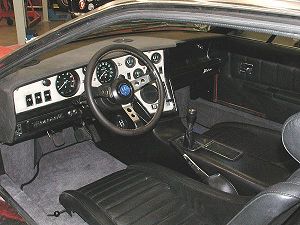 |
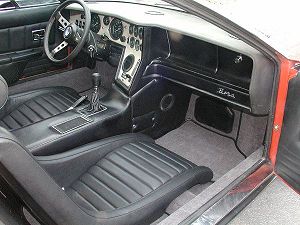 |
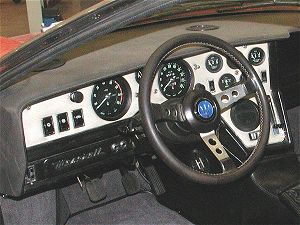 |
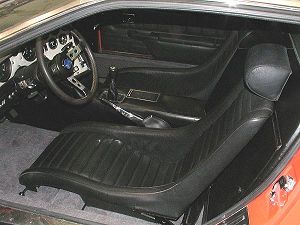 |
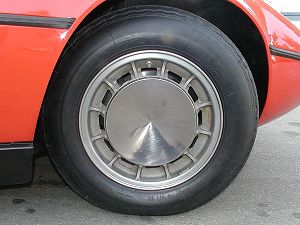 |
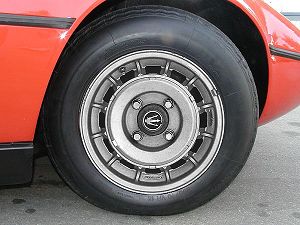 |
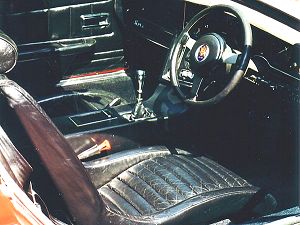 |
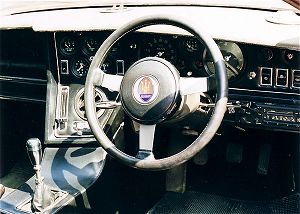 |
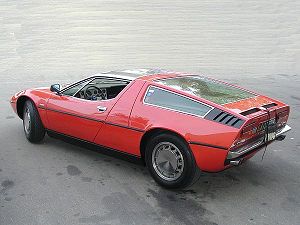 |
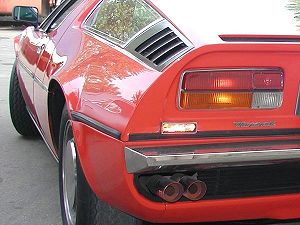 |
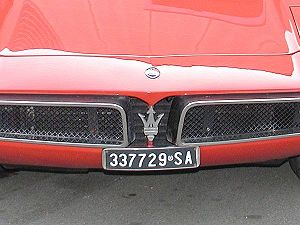 |
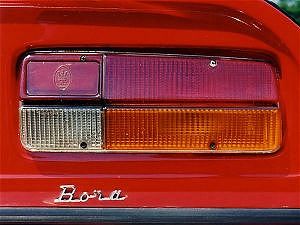 |
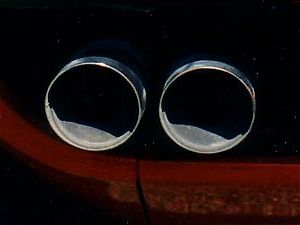 |
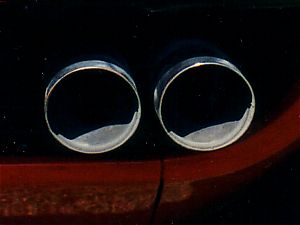 |
The following photographs are published with the kind permission of Ivan Ruiz, The Car Nut. |
|
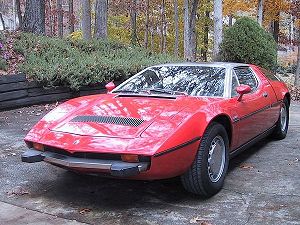 A 1974 Bora (US): Note the 'Merak' bonnet and big bumper. |
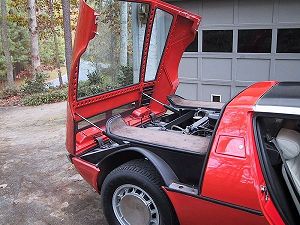 The rear section open: Note the hydraulic struts. |
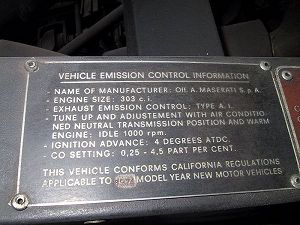 The US emissions control plaque dated 1974 |
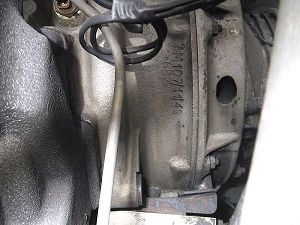 The chassis number stamped on the engine bell housing |
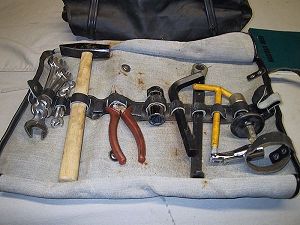 The comprehensive tool kit of the Bora |
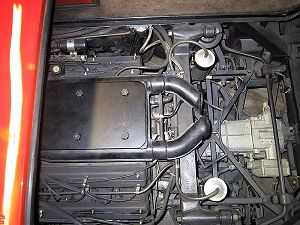 The engine bay minus the spare wheel, note the transaxle |
Check out The Car Nut website, there's always an interesting Maserati for sale! |
|
| TECHNICAL DATA - TIPO 117 | |
| Body type | 2-door 2-seater Granturismo |
| Production years | From 1971 to 1979 |
| Engine | Mid-engined V8-cyl @ 90° |
| Bore and stroke | 94 mm X 85 mm (94 x 89 mm) |
| Engine capacity | 4719 cc (4930 cc) |
| Compression ratio | 8.5:1 (8.75:1) |
| Maximum power | 310-bhp @ 6000 rpm (320 bhp @ 5500 rpm) |
| Distribution | Four overhead camshafts, two valves per cylinder |
| Induction system | No 4 Twin-choke Weber 42DCNF bdowndraught carburettors |
| Ignition | Electronic ignition |
| Lubrification | Forced with pressure pump |
| Transmission | Rear wheel drive |
| Differential | ZF transaxle |
| Clutch | Hydraulic single dry plate |
| Gearbox | 5-speed and reverse transaxle |
| Chassis | Monocoque with tubular flexibly mounted rear subframe |
| Front suspension:- | Independent wheels, coil-springs and telescopic shock-absorbers and anti-roll bar |
| Rear suspension:- | Independent wheels, coil-springs and telescopic shock-absorbers and anti-roll bar |
| Brakes | Hydraulically operated ventilated disc brakes on all four wheels |
| Wheelbase | 2600 mm |
| Wheel tracks | Front 1475 mm Rear 1447 mm |
| Tyres | Front and rear:- 185/70 x 15 (215/70 x 15) |
| Dry weight | 1520 kg |
| Overall length | 4335 mm |
| Overall width | 1768 mm |
| Overall height | 1138 mm |
| Maximum speed | 280 km/h |
| Models constructed | 530 |
| These Bora brochure courtesy of Henry Peder. | |
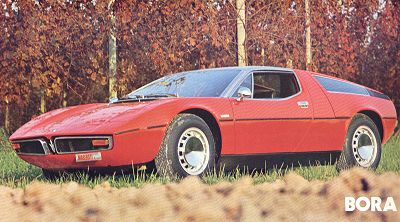 |
|
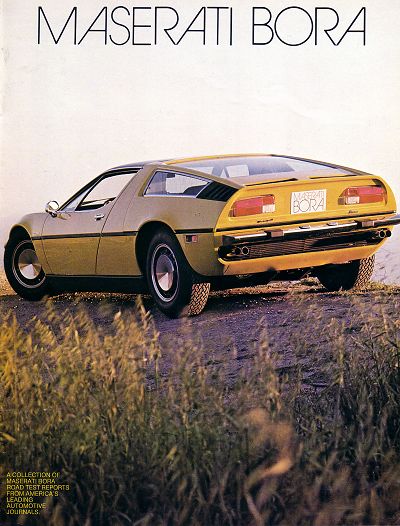 |
|
 |
|
To enter Enrico's Maserati Pages CLICK HERE! Copyright: Enrico's Maserati Pages - © 2003-2004. All rights reserved. |
